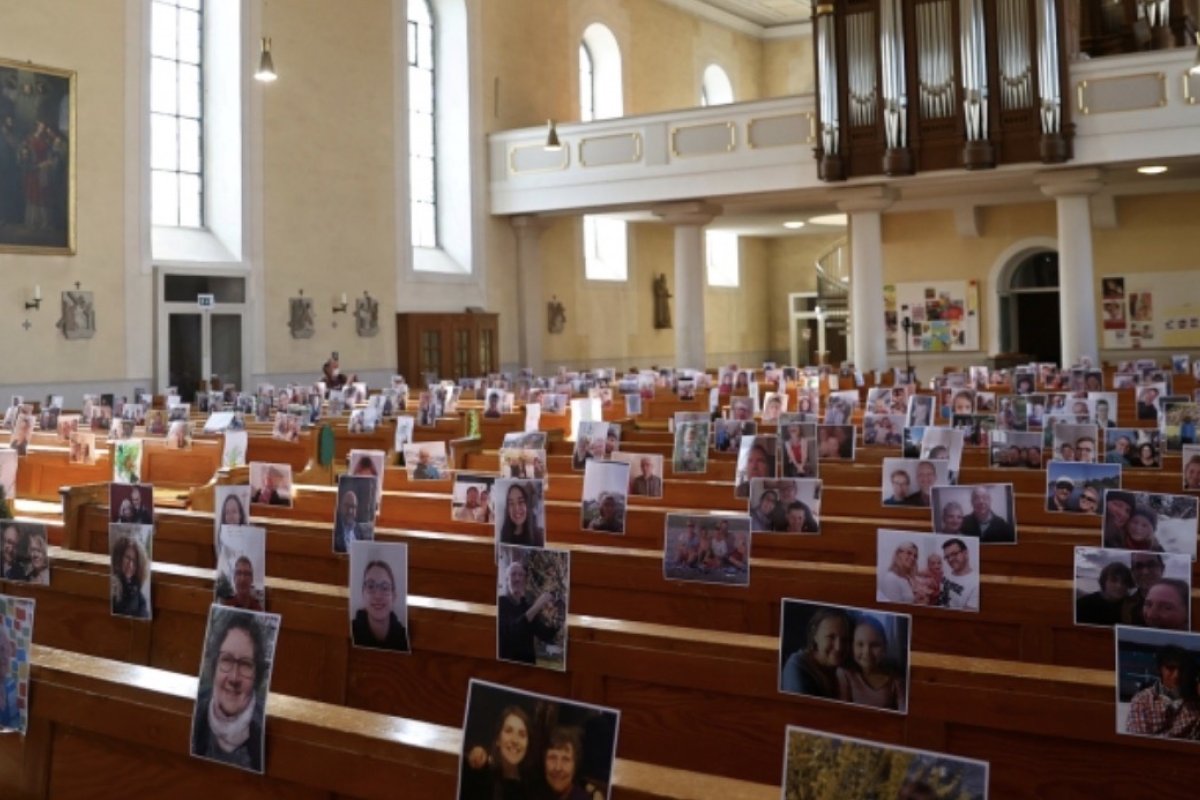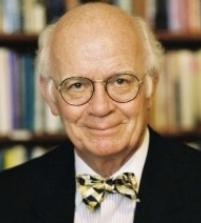
Hope in the Midst of Apocalypse
Martin Marty ponders the themes of Apocalypse, (In)Action, and Theodicy in relation to COVID-19
It is true, even if often forgotten, that in every age, century, or millennium some combination of world events arises that is so potent it forces entire populations to revisit and often revise (sometimes radically) the views that held their worlds together. Historians can easily discern and mark these transitions (e.g., B.C. and A.D., pre- and post-Reformation, antebellum and postbellum America, before and after 9/11), but it is altogether something different to live through such a profoundly liminal moment in time. Even with a historical understanding of past moments of intense widespread change, it is not exactly clear how one should act, feel, or think in the midst of one. This year, we gasp as we collectively face a new instance of plague—the coronavirus, COVID-19, mini-splinters of the natural world that, though tiny in size, have brought the world to a standstill. Even with all the talk about “returning to normal” sometime in the (hopefully near) future—something I admittedly hope for—it is also very likely that the world to which we will “return” will not be the same one we “left.”
Apocalypse. Cultural observers are prone, for better or worse, to resurrect historic terms in an effort to interpret events in the present that challenge our ability to understand. Thus Elizabeth Dias, in a recent New York Times article titled “The Apocalypse as an ‘Unveiling’: What Religion Teaches Us About the End Times,” put the concept of “apocalypse” to new employment as a way of making sense of the current upheavals in the world. Dias is one among many who are trying to understand how the religious imaginations of Americans—she begins her article interviewing an evangelical woman from Texas—are shaping how they understand the pandemic (and how they respond to it).
Dias cannot not notice that “about 40 percent of American adults believe [for example] that Jesus is definitely or probably going to return to earth by 2650.” And while Dias thankfully doesn’t tarry too long on the Christian art of predicting future events, she does emphasize (and rightly so) that many multi-millions of Americans do, and that for many of them it significantly informs their social and political lives. It was some relief then to read how one of her interviewees, the “public theologian” Ekemini Umani, provided a more nuanced and humble take on the apocalypticism of this moment: “Is it the end of the world? Maybe it is, maybe it isn’t. But we need to learn to number our days because we really do not know when our last breath will be.”
(In)Action. Umani did offer an alternative strategy in the face of catastrophe: “do something.” Shall everyone run? Here is where Martin Luther showed up, half a millennium ago. “Doing something” for him meant, first, preaching, as he did when he pondered “Whether One May Flee from a Deadly Plague” in the midst of the bubonic plague in August 1527. Mary Jane Haemig is one of many historians who reported that the Protestant Reformer and his pregnant wife Katharine together chose to risk death in plague-stricken Wittenberg, Germany. While many of his colleagues and sympathizers fled the cities (those who could afford to, that is), Luther and his wife chose instead the path of high-risk hospitality by remaining in Wittenberg and opening their home, believing that “we are bound to each other” and that community and family responsibilities were more important than protecting their personal health and safety.
Our situation is similar-but-different, in no small part because we have better knowledge about how to combat plagues like this one, and our call to action is also similar-but-different to Luther’s. The courageous call to action today—following Luther’s lead to respond to the plague from a sense of being “bound to each other”—is strangely a call to inaction. Out of a concern for the safety and wellbeing of our loved and ones and neighbors, especially the most vulnerable among them, we commit ourselves to withdrawing our physical presence (social distancing) and temporarily closing the doors to our homes (quarantine). “Doing something” in this moment actually requires us to do what feels like a whole lot of nothing.
Theodicy. One lesson that studying the history of plagues in the Reformation Era teaches us is that many devoutly religious people—and Dias, among others, reminds us that we have many such people here in this country—will seek after faith-filled ways of understanding this moment, theological rationales for making sense of this unsought and perplexing experience of disease. In a world that seemingly had to deal with “the plague of the month,” scholars, clergy, and laypeople alike were forced to interpret their experiences of plagues and their devastating consequences in light of their faith. Imagine: they were told that they should believe and proclaim that God created and cares for the world; that they should describe God as creative and loving; but then, they had to ask, why does God allow for evil things like plagues to happen? Some termed their reflection theodicy—the theological study of why God permits evil. And while it is a question that has occupied the minds of religious folks throughout history, it was given particular form in the Christian tradition in the fourth and fifth centuries by Saint Augustine and his intellectual heirs. Many reflecting sufferers found justification for their terrible plight, drawing on particular scriptural passages that detail how violation of the commands of a just God demands punishment… by God. To be sure, however, many also wrestled with the fact that the plagues (and droughts and wars) were also inflicted on the innocent. For Christians living in a plague-ridden world, the question of theodicy was unavoidable.
The devastating effects of the coronavirus, among other such “evils,” place demands on people of faith which will keep them busy during and beyond however long it lasts. Most believers within the Christian world and other “theistic” traditions have maintained their belief in the face of such horrors, even while wrestling with the paradoxes and puzzlement of theodicy, and we have every reason to believe this will be the case now. But there are also stories we should not miss of the faithful offering hospitality (with appropriate social distance, of course), investing in research, caregiving, manifesting empathy, and living graciously in the midst of all this. It might be true that the “end of the world” is at hand, or at least the end of the world that we knew, and yet, against all odds, we can find measures of hope in the midst of the present apocalypse.
Sightings is edited by Joel Brown, a PhD Candidate in Religions in the Americas at the Divinity School. Sign up here to receive Sightings via email. You can also follow us on Facebook and Twitter. The views and opinions expressed in this article are those of the author and do not necessarily reflect the position of the Marty Center or its editor.
Image: Photos of churchgoers in Achern, Germany, after their worship service was closed due to the spread of coronavirus, April 5, 2020. (Photo Credit: Kai Pfaffenbach)


